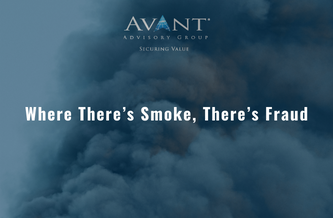
As a convicted felon, Sam E. Antar, the former CFO for the now-defunct consumer-electronics chain Crazy Eddie, no doubt has regrets. Among them: he is no longer in the game at a time when corporate fraud is experiencing a resurgence. “If I were out of retirement today, I’d be bigger than Bernie Madoff,” he boasts.
In conjunction with CEO Eddie Antar (his cousin), Sam Antar helped mastermind one of the largest corporate frauds in the 1980s, bilking investors and creditors out of hundreds of millions of dollars. Today, he makes a living lecturing about corporate fraud (and shorting the stocks of companies he thinks may have inflated earnings).
Antar says that despite the antifraud provisions of the Sarbanes-Oxley Act of 2002 and the recently enacted Dodd-Frank Wall Street Reform and Consumer Protection Act, it remains as easy today for bad guys, both internal and external, to loot corporate coffers as it was during the Enron and WorldCom days. “Nothing’s changed,” he says. “Wall Street analysts are just as gullible, internal controls remain weak, and the SEC is underfunded and, at best, ineffective. Madoff only got caught because the economy tanked.”
Antar won’t get much of an argument from organizations that monitor corporate fraud. In fact, the consensus today is that financial shenanigans are markedly on the increase. “There’s a lot more employee fraud and embezzlement today then there was 10 years ago, and this past year there was much more than a year ago,” says Steve Pedneault of Forensic Accounting Services. “People blame the economy, but much of the fraud and embezzlement that’s coming to the surface now was in the works for 4 or 5 years before the recession hit.”
Last year, the Committee of Sponsoring Organizations of the Treadway Commission’s report on corporate fraud concluded that fraud continues to increase in depth and breadth despite Sarbanes-Oxley; the methods of committing financial fraud have not materially changed, and traditional measures of corporate governance have limited impact on predicting fraud.
In other words, same old same old, only worse: in its 2010/2011 Global Fraud Report, risk consulting firm Kroll found that business losses due to fraud increased 20% in the last 12 months, from $1.4 million to $1.7 million per billion dollars of sales. The report, based on a survey of more than 800 senior executives from 760 companies around the world, also found that 88% of the respondents reported being victims of corporate fraud over the past 12 months. If fraud were the flu, this would qualify as a pandemic.
The most likely targets by industry are financial services, media, technology, manufacturing, and healthcare. Small and midsize companies are also more vulnerable. “Many of these organizations typically rely on a small accounting department, especially in today’s economy,” says Pedneault. They simply don’t have the resources to catch fraudsters.
That challenge becomes all the more daunting when one considers the many varieties of fraud that exist. Aside from various forms of embezzlement and outright theft, and the growing risk of information theft (think hackers), two other kinds of corporate malfeasance have come to the fore in recent years: fraud in the business model and fraud in the business process.
The former is defined by a company selling illegal or worthless wares. “If the pharmaceutical industry sells alleged off-label drugs that have not been approved by the FDA, or the financial-services industry is offering worthless subprime mortgages, that can constitute business-model fraud,” says Toby J. F. Bishop, director of the Deloitte Forensic Center for Deloitte Financial Advisory Services.
Fraud of the business-practice variety, Bishop explains, can range from corporations ignoring or turning a blind eye to environmental or safety laws to the ever-popular practice of engaging in “window dressing” at the end of the quarter.
An Action Plan
With fraud on the rise, and with all parties that could possibly be tempted feeling more pressure to cross the line, how should companies respond? First, the bad news: “Most fraud today is uncovered by whistle-blowers, or by accident — a tip, a rogue piece of mail, or by happenstance,” says Tracy L. Coenen, a forensic accountant and fraud investigator who heads up Sequence, a forensic accounting firm.
In a sense, companies (at least those that are publicly traded) were supposed to self-insure against fraud by implementing, at great expense, the controls framework included in Sarbanes-Oxley. But a framework still requires an enforcer, and at many companies there is none. “There’s often no single entity for oversight,” says Deloitte’s Bishop. “Many companies have no compliance or risk management at all.”
Even when they do, there’s the issue of how effective it can be. It’s not a job that wins friends and influences fellow workers.”The compliance officer is the most hated person in the company,” notes Thomas Quilty, CEO of BD Consulting and Investigations. “Companies often retaliate against them,” adds Antar.
Source: CFO | Risk & Compliance
